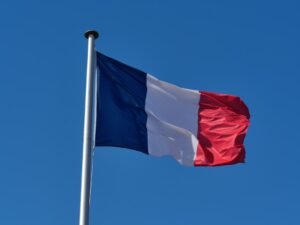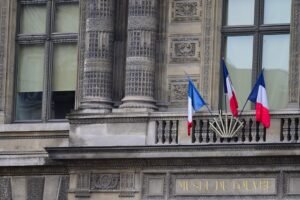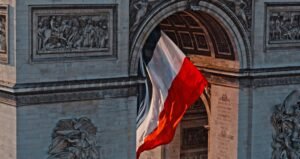

The Beauty of Norwegian Nature: Basic Norwegian Phrases for Environmental Vocabulary
Norway is renowned for its breathtaking natural beauty, from its majestic fjords and towering mountains to its pristine forests and crystal-clear lakes. The country’s diverse landscapes offer a paradise for outdoor enthusiasts and nature lovers alike. In order to fully appreciate and understand the beauty of Norwegian nature, it is important to have a basic understanding of the language. Language plays a crucial role in our ability to describe, interpret, and connect with the natural world around us. By learning key vocabulary and phrases related to Norway’s landscapes, flora and fauna, weather and seasons, national parks, sustainable tourism practices, renewable energy, coastal landscapes, and marine life, we can deepen our appreciation for the country’s natural wonders.
Table of Contents
ToggleUnderstanding the Importance of Environmental Vocabulary
Environmental vocabulary is essential for understanding and appreciating nature. It allows us to accurately describe our surroundings, identify different species of plants and animals, discuss weather patterns and seasons, and engage in conversations about conservation and sustainability. Without a solid foundation of environmental vocabulary, our experiences in nature may be limited to mere observations without deeper understanding or connection. By expanding our vocabulary, we can enhance our ability to fully immerse ourselves in the beauty of Norwegian nature.
Basic Norwegian Phrases for Describing Landscapes
When it comes to describing landscapes in Norway, there are several key phrases that can be useful. For example, “fjell” means mountain, “fjord” refers to a long, narrow inlet with steep sides or cliffs created by glacial erosion, “elv” means river, “innsjø” refers to a lake, and “skog” means forest. Pronunciation in Norwegian can be challenging for non-native speakers, but with practice it becomes easier. For example, “fjell” is pronounced as “fyell,” “fjord” is pronounced as “fyord,” “elv” is pronounced as “elv,” “innsjø” is pronounced as “in-sho,” and “skog” is pronounced as “skoog.”
Vocabulary for Identifying Norwegian Flora and Fauna
Norway is home to a wide variety of flora and fauna, and being able to identify them adds another layer of appreciation to the country’s natural beauty. Some common flora in Norway include “bjørk” (birch), “gran” (spruce), “furutrær” (pine trees), and “blomster” (flowers). As for fauna, Norway is known for its reindeer, moose, lynx, and various bird species such as the white-tailed eagle and the puffin. Learning the vocabulary for identifying these plants and animals allows us to better understand and connect with the natural world around us.
Learning to Describe Norwegian Weather and Seasons
Norway experiences a wide range of weather patterns throughout the year, from cold winters with heavy snowfall to mild summers with long daylight hours. Being able to describe the weather and seasons in Norwegian can enhance our understanding and appreciation of Norway’s natural beauty. Some common weather-related vocabulary includes “sol” (sun), “regn” (rain), “snø” (snow), “vind” (wind), “varmt” (hot), “kaldt” (cold), “vår” (spring), “sommer” (summer), “høst” (autumn), and “vinter” (winter).
Exploring Norway’s National Parks and Protected Areas

Norway is home to numerous national parks and protected areas, which are essential for preserving the country’s natural beauty and biodiversity. Some of the most famous national parks include Jotunheimen National Park, Rondane National Park, and Hardangervidda National Park. Learning the vocabulary for discussing these national parks and protected areas allows us to engage in conversations about their importance and the need for conservation. Some key vocabulary includes “nasjonalpark” (national park), “vernede områder” (protected areas), “naturreservat” (nature reserve), and “bevaring” (conservation).
Understanding Norway’s Sustainable Tourism Practices
Norway is known for its commitment to sustainable tourism practices, which aim to minimize the negative impact of tourism on the environment and local communities. By understanding and discussing these practices, we can contribute to the conversation surrounding sustainable tourism and make more informed choices as travelers. Some key vocabulary includes “bærekraftig turisme” (sustainable tourism), “økoturisme” (ecotourism), “miljøvennlig” (environmentally friendly), and “lokalt engasjement” (local engagement).
Vocabulary for Discussing Renewable Energy in Norway
Norway is a global leader in renewable energy, with a significant portion of its electricity production coming from hydropower. By learning the vocabulary for discussing renewable energy, we can better understand Norway’s commitment to sustainability and contribute to conversations about renewable energy in our own communities. Some key vocabulary includes “fornybar energi” (renewable energy), “vannkraft” (hydropower), “vindkraft” (wind power), “solenergi” (solar energy), and “bærekraftig utvikling” (sustainable development).
Discovering Norway’s Coastal Landscapes and Marine Life
Norway’s coastal landscapes are renowned for their beauty, with dramatic cliffs, picturesque fishing villages, and abundant marine life. By learning the vocabulary for discussing coastal landscapes and marine life, we can deepen our appreciation for Norway’s coastal wonders. Some key vocabulary includes “kyst” (coast), “klipper” (cliffs), “fiskevær” (fishing village), “hav” (sea), “hval” (whale), “sel” (seal), and “fisk” (fish).
Embracing the Beauty of Norwegian Nature through Language
In conclusion, language plays a vital role in our ability to appreciate and understand the beauty of Norwegian nature. By expanding our vocabulary and learning key phrases related to landscapes, flora and fauna, weather and seasons, national parks, sustainable tourism practices, renewable energy, coastal landscapes, and marine life, we can deepen our connection with the natural world around us. Whether we are exploring Norway’s majestic fjords, hiking through its pristine forests, or admiring its diverse wildlife, language allows us to fully immerse ourselves in the beauty of Norwegian nature. So let’s continue learning and exploring, and embrace the wonders that Norway has to offer.
If you’re interested in expanding your knowledge of the Norwegian language beyond environmental vocabulary, you might find the article “Learning Time and Dates in Norwegian” helpful. This article, provides a comprehensive guide to understanding how to tell time and discuss dates in Norwegian. Whether you’re planning a trip to Norway or simply want to enhance your language skills, this resource is a valuable tool for learners at any level.
If you want to learn Norwegian, you can register for classes here. We look forward to hearing from you and helping you become fluent in Norwegian.





